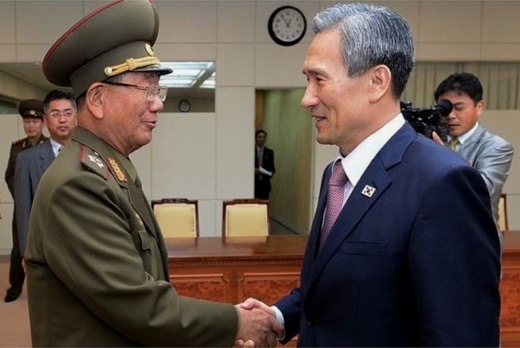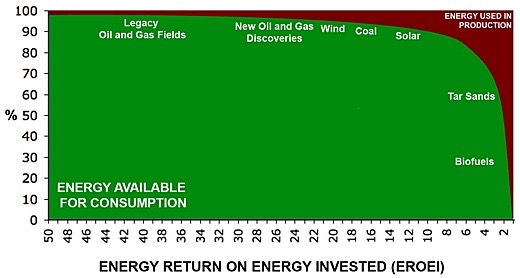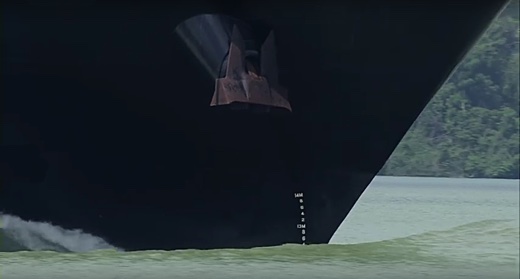By Jared Spears on 22 July 2022 in Resilience -
(https://www.resilience.org/stories/2022-07-22/the-radical-roots-of-community-supported-agriculture/)

Image above: Photo promoting education in organic farming. (https://www.bestcolleges.com/blog/organic-farming-degrees-careers/).
Community-Supported Agriculture (CSA) is one of those rare ideas which combine transformative potential with an elegant simplicity. The CSA model of funding and sustaining locally-rooted agriculture has grown exponentially around the globe over the past four decades. Since the first formal CSA at Robyn Van En’s Indian Line Farm in South Egremont, Massachusetts in the early 1980s, CSAs have become a household fixture across the US and elsewhere; the most recent estimate by the USDA (2012) counted approximately 13,000 CSA farms in the US alone.
The success of community-supported farming has coincided with rising demand for organic food since the late 1970s. But the model’s popularization has meant that, sometimes, CSAs can be misrepresented as ‘just another way’ for consumers to purchase fresh, seasonal food. Important elements embedded into the CSA model, such as that of shared risk among members, make the arrangement more than merely transactional. In fact, the origins of the CSA movement in America have radical roots, drawn from the prominent environmental movement and a subculture dissatisfied with the prevailing economic system.
A 1985 paper newly digitized from the Schumacher Center archive, “Community Supported Food Systems”, clarifies the deeper motivations which brought CSAs to the US in their present form. It is a timely reminder of the transformative potential the broader concept of Community Supported Industry still holds today – especially in light of our urgent need to dramatically reduce carbon emissions and foster resilience in our supply chains.
Given renewed interest in the concepts of local food security and food sovereignty as principles of climate action and economic justice, it is worth revisiting the transformative potential of the CSA model as grasped by those who first put the idea into action.
Importing the CSA model from Switzerland
The community-supported farming movement popularized in the 1980s had multiple antecedents around the globe. With examples of localized farming initiatives from Chile, to Japan, to rural Black communities in the Southern US, this movement may be best thought of as a spontaneous, distributed reaction to the conditions of globalized food markets. At the same time, growing concern around the health impacts of chemical pesticides, as well as the environmental costs of fossil fuel-based fertilizers, added impetus to the organization of organic farming at a more human scale.
That said, the formalized CSA model which subsequently spread across the US and beyond was pioneered in the Southern Berkshires, in the state of Massachusetts. And as the “Community Supported Food Systems” paper shows, its character was highly informed by models developed earlier in Switzerland. The ethos and organizing principles of these Swiss examples were documented and brought to Massachusetts by one Jan Vander Tuin.
Vander Tuin, a champion of pedal-powered transport and car-sharing, would later go on to make his mark advocating for appropriate technology in transportation. But before all that, he was a disillusioned farm laborer looking for alternatives. As Vander Tuin recalled in a 1992 article in RAIN Magazine, he went to Switzerland in the early ‘80s from the US having “felt burned economically… with an eye open for alternatives to market agriculture.” As he described the attraction of Switzerland at that time:
The early 1980’s were inspiring years for Swiss activists. The youth were rebellious, and citizens at large asked questions of the nation that epitomizes capitalism. I saw many evolving solutions to problems that I, coming from the States, had written off as unsolvable.”
After some time working first-hand on an organic farm outside Zürich, Vander Tuin was directed to a successful producer-consumer food co-op in Geneva, which had been inspired by the cooperative movement in Chile during the Allende administration. Vander Tuin called the project the most radical food co-op group he had ever encountered: it “addressed almost every problem I’d encountered in modern farming.” This project’s philosophy went beyond ecologically sustainable practices and pesticide-free produce, addressing the steep economic challenges faced by organic farming in an era of big, corporate agri-business.
The basic notion that consumers personally cooperate with producers to fund farming in advance, he wrote “makes for more efficient use of land… and much less stress for farmers…” In short, Vander Tuin recognized that this model made organic farming for local consumption not just economical, but also more elegant and communitarian – in a word, more beautiful.
What drove Vander Tuin, as expressed in the paper, is “the feeling that existing food infrastructures are hopelessly entangled in the societal/cultural systems, especially the ‘free’ market.” Rather than wait for planners and experts, Vander Tuin noted how, in the Swiss examples, “concerned consumers and frustrated food workers” decided to provide responsibly-grown organic food for themselves. Shared values such as organic growing and energy-conscious distribution were identified from the outset. Everything down to how shares were calculated – based on the amount of produce the average non-vegetarian consumes per year – underscores the ambition for local self-reliance in food production.
The document also highlights a strong desire for economic fairness at every step in CSA practices. The costs of start-up investment and land would “ideally…be divided up equally (or by sliding scale).”
In the Swiss example, wages for farm labor were to be estimated at “the average wage of worker in region – not banker unfortunately” Vander Tuin added with a dose of humor. “The emphasis in all economic thinking,” it concludes, “was not to work the maximum profit principle but on the need/cost coverage principle. This meant more trust and more participation.”
Finding like minds in the Southern Berkshires
Vander Tuin documented these practices, eager to bring them back to the US for implementation. He caught wind of a group in the Southern Berkshires who had set up a sort of buying club for locally-grown produce, including a handful of local growers meeting the demand. The Self-Help Association for a Regional Economy (S.H.A.R.E.) was a community micro-loan program which grew out of the activities of the E.F. Schumacher Society (precursor to the Schumacher Center) in South Egremont.
Vander Tuin became aware of the group, according to Schumacher Center co-founder Susan Witt, after reading a news article about their novel SHAREcropper initiative. Community-members would pool to list requests for locally grown produce in the SHARE newsletter, enabling them to identify farmers to grow the food locally. Those growers, in turn, secured demand for their crops in advance.
In other words, SHAREcroppers was managing, in an ad-hoc way, what Vander Tuin envisaged as a systematic alternative to corporate, mono-crop agriculture.
When Vander Tuin presented his proposal to members of S.H.A.R.E., they promptly sent him down to the road to meet one of their growers: Robyn Van En, who ran Indian Line Farm. Robyn not only held equally radical ambitions, but possessed the roll-up-her-sleeves attitude needed to make them a reality. With a community around them dedicated to the cause and willing to help see through the implementation, they could set to work.
Having moved to the Southern Berkshires several years earlier from California, Van En was pursuing her own alternative vision for growing at Indian Line. She brought deep ethical convictions about humanity’s relationship with nature to inform the early CSA movement. She later articulated the ‘Ideals of Community Supported Agriculture’ for a CSA manual in such terms:
Agriculture… is the mother of all our culture and the foundation of our well-being. Modern farming…driven by purely economic considerations, has driven the culture out and replaced it with business: agriculture has become agribusiness… Our ideals for agriculture come to expression in the biodynamic method of farming which seeks to create a self-sustaining and improving ecological system in which…everything has its place in the cycle of the seasons… The community involvement in the rhythms of the seasons and the celebrations connected with them will also enable us to find our proper spiritual connection to nature again.”
With a new agricultural ethic clear from the start, Van En also recognized early on a need for a new economic approach as well. As she later described: “I knew there had to be a better way…something cooperative, that allowed people to combine their abilities, expertise, and resources for the mutual benefit of all concerned.”
When S.H.A.R.E. members introduced her to Vander Tuin in 1985, they “only had to talk for a few minutes,” according to Van En, to know that what he’d brought back from Switzerland articulated just the sort of community framework she’d been looking for. As she later summarized:
The prices we pay for food may be cheaper than ever, but the hidden costs… are being paid [in other ways]. Unlike agribusiness, which has the motto: ‘The end (profits) justifies the means (exploitation)’, CSA’s motto is: ‘The means (community) assures the end (quality food).’”
Planting the seeds of the CSA movement
The group’s first venture in 1985 involved shares for apples and cider from the orchard adjacent to the present-day Schumacher Center. After the growing season, shareholders were invited to the autumn harvest in a spirit of celebration. (Vander Tuin reportedly even designed and built a pedal-powered cider press for the occasion). Producers and consumers were brought together in relationship with the land and its produce, creating space for community while proving the viability of the CSA model.
The following season, Indian Line Farm became the first fully-fledged CSA in the US. Credit for the success of the model in the Southern Berkshires goes to the many members of the community who supported Indian Line in various ways.
But it was only the beginning for Van En: an educator by training, she would go on to become a tireless advocate of the CSA model and biodynamic farming and a vocal critic of industrialized agribusiness. The propagation of the CSA model across North America in the following decades owes much to Robyn’s conviction and endurance.
A final aspect of the CSA concept, originally outlined by Vander Tuin, remained only a theory until Indian Line Farm came on the market in 1998, one year after Van En’s untimely passing. At that time the Community Land Trust in the Southern Berkshires and two area farmers formed a partnership with a local Nature Conservancy chapter to purchase the farm. Placing the land into the Community Land Trust in perpetuity was yet another innovation.
Effectively decommodifying the land on which community food was grown while permitting the leaseholder to own the value of improvements, the move made good on an idea which, in Vander Tuin’s original proposal, appeared speculative: “community influenced land stewardship in the form of a ‘Community Land Trust’,” he wrote, seemed “applicable and desirable” compared to “normal ‘property’ arrangements.”
Today, the CSA model articulated by Van En and Vander Tuin remains a vital, community-based alternative to the host of health, environmental, and economic issues posed by industrial agribusiness. No wonder that the growth of CSAs has reportedly surged since 2020. Growing healthy, ecologically-sound food locally is, for a multitude of reasons, the most economical way for a community to provide for this most elemental of needs.
Cutting out intermediaries and import dependency is a cornerstone of community food security and food sovereignty, as marginalized communities around the country and the world increasingly recognize. Combined with agro-ecological farming methods, relocalized agriculture holds great potential in our efforts to address climate change: reducing carbon emissions and helping to sequester carbon already in our atmosphere. And by layering on the innovative Community Land Trust model, affordable access to farmland can be secured for future generations of growers as well.
At the most human level, reconnecting people around the growing of their own food may prove to be among our most effective means of healing our widespread sense of disconnection from nature and community. It offers the promise for any community to rediscover how working in harmony with nature, rather than merely seeking to exploit it, can be as economical as it is beautiful.
.










